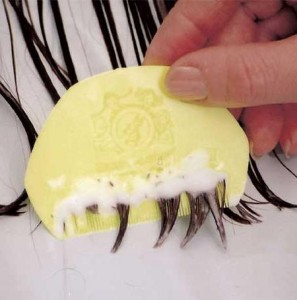
More evidence that low-calorie sweeteners are bad for your health
Studies show that artificial sweeteners can raise the risk of hypertension, metabolic syndrome, type 2 diabetes and heart disease, including stroke.

Head lice (Pediculus capitis) are human parasites and live exclusively on the scalp, feeding on human blood.
The bites are not painful, but the saliva can cause allergic reactions that result in itching. Scratching can lead to skin damage and serve as an entry for germs, and in severe head lice cases individuals may feel tired and irritable.
Children aged 4-16 are most likely to suffer from head lice, although they can easily spread to the rest of the family. Outbreaks may be greater in the autumn, when children return to school, before any strategies have been put in place to control the problem.
There’s no magic to lice removal. It requires patience and attention and extra attention to hygiene while you deal with the infestation.
Some information on the life cycle of head lice is also helpful.
The female lays her eggs, attaching each one to a single hair using a strong glue-like substance. The tear-shaped eggs hatch after seven to 10 days and take between six to 12 days to pass through the nymphal stages to become adults. Eleven to 18 hours after maturing the female is ready to mate and lays the first eggs a further 11 to 18 hours later. Females lay approximately six eggs per day, producing an average of 56 eggs per insemination.
Lice do not fly, but can ‘jump’ from one person to another by close head contact or on shared clothing, towels and bedding.
Take the non-toxic approach
The pediculides (insecticides) used to treat head lice are toxic –not just to the lice but to humans as well. There is good evidence that conventional treatments may not work as well as they claim, because lice are evolving resistance to the pesticides in them. In contrast the popular Bug Buster kit – which contains a selection of Bug Buster combs, expressly designed to remove lice, along with instructions on using them with ordinary shampoo and conditioner – has been shown to be superior to pediculides in treating head lice.
Non-toxic methods rely on the fact that thoroughly wet lice slow down and become easy to hook off with a fine toothcomb. Using a shampoo or conditioner or an oil such as olive oil to wet the hair also helps loosen the nits make them easier to remove with a specially made nit comb as well. Removing nits before they hatch and lice before they mature and lay more eggs is the goal.
Take the non toxic approach
The process of combing nits out of the hair should is repeated on a four-day cycle over two weeks. At the end of this period all life stages of the lice should have been removed, and no unhatched eggs should remain in the hair.
Treatment option 1
This creates an approximately 2% dilution suitable for children over 4 and adults (as long as there are no known sensitives). Mix thoroughly and saturate the hair with solution wrap in a turban or shower cap and leave overnight. The olive oil will suffocate the lice, but not the eggs which will need to be removed manually. In the morning comb through with a normal comb first to untangle the hair, then comb through thoroughly with a nit comb to remove the lice and eggs and wash hair. Repeat as suggested above.
The oils used in the the treatment above are all suitable for children. However, very young children can be much more sensitive to the effects of essential oils and so for children aged 2-4, or if you are concerned about sensitivities reduce the amount of oils as follows to make a 1% dilution:
Treatment option 2
This creates an approximately .5% dilution that is very safe for those with sensitivities and for children under 4 (again assuming there are no sensitivities). Mix the oil into the conditioner, saturate wet hair thoroughly with the mixture and comb through with nit comb. Wash hair as normal afterwards. Repeat on a four-day cycle over two weeks as suggested under Treatment 1.
If you are all concerned about sensitivity to essential oils and your child is under the age of 4 you can also simply use the conditioner without the essential oil.
Other things you can do

Please subscribe me to your newsletter mailing list. I have read the
privacy statement